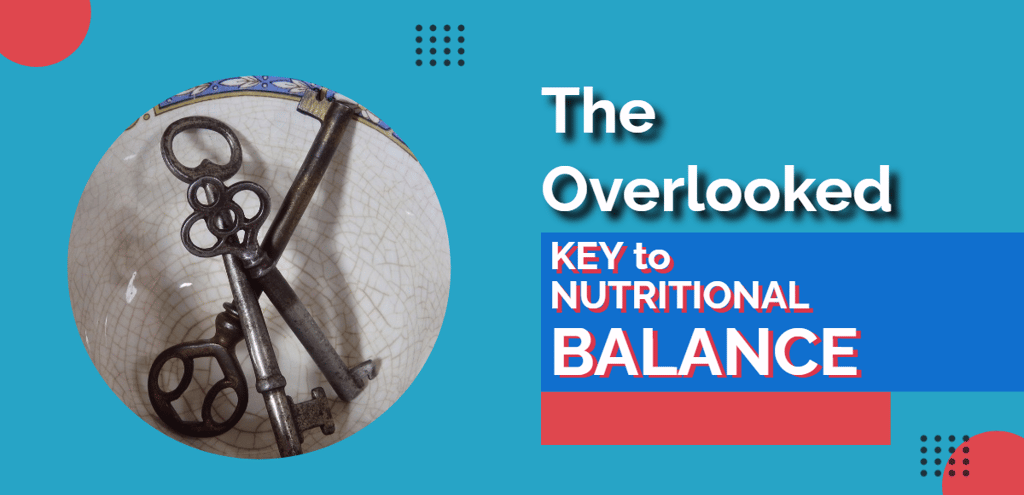Visit Innatefit1.com for exercise wear and equipment!!!
Understanding pH Levels in Blood: The Overlooked Key to Long-Term Nutritional Balance
Unlock the power of pH balance for lasting health. Discover how pH levels in blood, the distinction between acidic and alkaline foods, and an alkaline diet for maintaining optimal blood pH promote overall nutrition and vitality.
HEALTHY LIFESTYLEWOMEN'S HEALTHMEN'S HEALTHHEALTH
Joseph Battle
7/1/20258 min read


Introduction
Maintaining optimal health requires more than tracking calories, macronutrients, or vitamins. One of the most overlooked factors in maintaining long-term nutritional balance is the blood's pH level. As a dynamic measure of acidity and alkalinity, blood pH plays a central role in enzyme function, mineral bioavailability, immune response, and cellular health.
When your blood drifts even slightly away from its ideal range, the body must compensate by leaching minerals such as calcium and magnesium from bone and tissues. Over time, this compensation can contribute to chronic deficiencies, fatigue, and increased susceptibility to disease.
In this article, we examine seven key aspects of blood pH and nutrition. We begin by linking pH disturbances to nutritional gaps. Next, we define the scientifically recognized optimal blood pH level and explain how it intersects with diet and disease risk. Then, we clarify the confusion between acidic and alkaline foods so you can make more informed choices at every meal. Building on that foundation, we present an actionable alkaline diet for maintaining a healthy blood pH, promoting internal balance.
We follow simple, natural ways to balance pH with minimal upheaval to your daily routine. We also identify the most common acidic foods to avoid to support cellular health. Finally, we conclude by summarizing key takeaways and inviting you to adopt these principles for sustainable well-being.
Throughout, we emphasize natural ways to balance pH, focus on foods that help maintain a balanced pH, and highlight the benefits of an alkaline diet for achieving optimal blood pH—all in a professional, active-voice tone that guides you toward lasting nutritional balance.
The Connection Between pH Levels in Blood and Nutritional Deficiencies
When discussing pH levels in blood, we often overlook how shifts in acidity prompt the body to sacrifice vital nutrients. Specifically, if the internal environment becomes too acidic, the body will neutralize excess acids by releasing alkaline minerals—chiefly calcium, magnesium, potassium, and sodium—from bone stores and tissues. Consequently, this buffering process can leave you deficient in key micronutrients essential for bone density, muscle function, and metabolic efficiency.
Moreover, chronic low-grade acidosis has been linked to decreased magnesium retention. Magnesium is a cofactor in over 300 enzymatic reactions, including those involved in energy production, DNA synthesis, and nerve transmission. When magnesium is diverted to maintain pH homeostasis, athletic performance may suffer, sleep quality can deteriorate, and even blood sugar regulation can become imbalanced. Similarly, calcium depletion in the quest to buffer acidity can compromise skeletal integrity, thereby increasing the risk of fractures over time.
Additionally, the struggle to regulate an imbalanced internal pH can compromise the absorption of specific B vitamins, including iron, zinc, and selenium. For instance, an acidic gut environment may inhibit the proper conversion of dietary folate into its active form, resulting in suboptimal red blood cell formation and impaired homocysteine clearance.
Iron absorption also dips when gastric secretions are overly acidic, compounding the risk of anemia. Therefore, by understanding how pH levels in blood influence micronutrient pools, you can appreciate why merely increasing vitamin supplements may not resolve underlying deficiencies.
Furthermore, research indicates that an acidogenic diet—characterized by high consumption of animal proteins and refined grains—can accelerate metabolic acidosis and lead to nutrient depletion. Conversely, an alkaline diet for blood pH tends to preserve mineral reserves and support optimal enzymatic activity.
Consequently, aligning your nutrition strategy with pH balance helps protect nutrient stores, enhance metabolic resilience, and reduce reliance on synthetic supplementation. In the next section, we will define what exactly constitutes the optimal blood pH level and how to tailor your diet accordingly.
Understanding the Optimal Blood pH Level Concerning Diet and Disease
The scientific consensus identifies the optimal blood pH level as a tightly regulated range between 7.35 and 7.45. Deviations outside this window—even by a few tenths—can trigger compensatory mechanisms that burden the respiratory and renal systems. Yet, modern dietary patterns frequently push our internal milieu toward the lower end of this scale, predisposing us to chronic, low-grade metabolic acidosis.
First, it’s essential to recognize how the kidneys and lungs collaborate to preserve blood pH. When dietary factors tip the balance toward acidity, the kidneys excrete excess hydrogen ions and reabsorb bicarbonate to restore equilibrium. Over time, the renal workload escalates, which may contribute to reduced kidney function, hypertension, and electrolyte imbalances. Similarly, the lungs can adjust carbon dioxide elimination to counteract pH shifts, but this mechanism can become strained under persistent dietary acid loads.
Disease risk also correlates with blood acidity. Studies indicate that individuals with chronically lower blood pH within the normal range exhibit higher markers of inflammation, insulin resistance, and endothelial dysfunction. In contrast, those maintaining a slightly more alkaline blood pH often display better lipid profiles, improved glycemic control, and reduced systemic inflammation. Therefore, targeting the optimal blood pH level through diet serves as a preventive strategy against metabolic syndrome, cardiovascular disease, and type 2 diabetes.
Dietary acid load is quantified by the potential renal acid load (PRAL) score, which assesses net acid production from foods. For instance, red meats, processed cheeses, and refined grains have high positive PRAL values, whereas fruits, vegetables, legumes, and nuts typically have negative PRAL scores, indicating they promote alkalinity. By systematically choosing foods that contribute to a balanced PRAL, you foster the ideal internal environment for enzymatic processes, cellular repair, and immune function.
Transitioning toward an alkaline-favoring meal plan does not demand extreme measures. Instead, it requires an awareness of how typical Western fare shifts your pH and a willingness to swap a portion of acid-forming foods for those that balance pH. In our subsequent section, we’ll dive deeper into the distinction between acidic and alkaline foods, clarifying the confusion so you can make informed, health-promoting choices at every meal.
Acidic vs Alkaline Foods—Clarifying the Confusion for Smarter Choices
The debate around acidic vs alkaline foods often generates confusion, especially when people narrowly equate food pH with the effect a food has on the body. For instance, lemons and limes have an acidic taste, yet once metabolized, they yield alkaline byproducts that help maintain healthy pH levels in the blood. In contrast, some foods that taste neutral or bland—such as processed grains—can produce acidic residues, which can contribute to an acidic internal environment and promote the development of acidosis.
To simplify, nutrition experts classify foods based on their post-digestive impact on metabolic pH. Acidogenic foods include animal proteins (beef, pork, poultry, fish), dairy products (cheese, yogurt), processed grains (white flour, white rice), and certain high-sugar items. Conversely, alkalizing foods encompass most fruits, vegetables, legumes, nuts, and seeds. However, exceptions exist—tomatoes and cranberries, for example, produce an acidic ash despite their plant-based status, whereas almonds generate a modestly alkaline residue.
Transitioning from theory to practice, start by examining your daily plate composition. Aim for at least 60–80% alkalizing foods and limit acid-forming items to 20–40% of your diet. Incorporate leafy greens (spinach, kale), cruciferous vegetables (broccoli, cauliflower), and fresh berries. Replace white grains with quinoa, buckwheat, and millet—snack on raw nuts, seeds, and alkalizing fruits like melons and kiwis. When you choose wisely, you naturally align your diet with an alkaline diet that supports a healthy blood pH level, promoting internal balance and nutrient conservation.
Furthermore, pairing foods strategically can modulate overall pH load. For example, combine lean protein with roasted vegetables rather than serving protein with starchy, refined carbs. Add lemon juice or apple cider vinegar to salads; these acidic tastes paradoxically encourage alkalinity once metabolized. By mastering the nuances of acidic vs alkaline foods, you gain the freedom to enjoy a diverse diet while supporting cellular health, digestive efficiency, and long-term resilience.
Building an Alkaline Diet for Blood pH That Promotes Internal Balance
Crafting an alkaline diet for blood pH doesn’t require a radical overhaul. Instead, it involves making mindful swaps and planning balanced meals. Begin each day with a nutrient-dense breakfast: a green smoothie featuring spinach, cucumber, kiwi, and a scoop of plant-based protein powder. This simple blend floods your system with alkalizing phytonutrients, supports digestion, and primes your body for a balanced pH journey.
For lunch, prioritize a colorful salad heavy on leafy greens, bell peppers, shredded carrots, and sprouts. Dress it with extra-virgin olive oil, lemon juice, and a dash of sea salt. Not only does this meal deliver essential vitamins and minerals, but it also emphasizes foods that help maintain a balanced pH level. If you crave grains, opt for a small portion of quinoa or wild rice—both are modestly alkalizing compared to white alternatives.
Dinner can revolve around steamed or roasted vegetables paired with a lean protein source. Think grilled salmon with asparagus and zucchini or baked tofu with roasted Brussels sprouts and sweet potatoes. Complement these dishes with alkalizing beverages, such as herbal teas or water infused with lemon and fresh mint. By structuring meals in this way, you maintain an optimal blood pH level, ensuring that digestive enzymes, metabolic pathways, and immune defenses function optimally.
Snacks also offer opportunities to support blood alkalinity. Raw almonds, pumpkin seeds, and guacamole with vegetable sticks are perfect choices. They provide healthy fats, plant protein, and fiber, while simultaneously encouraging a favorable pH balance. Finally, consider occasional alkalizing soups (e.g., vegetable broth with greens) during colder months. They soothe digestion, hydrate the body, and contribute to an overall alkaline-promoting eating pattern.
Simple and Natural Ways to Balance pH with Minimal Dietary Changes
While overhauling your entire diet may seem daunting, you can achieve a balanced pH level through minor, strategic adjustments. First, drink more water. Staying adequately hydrated supports kidney function, which in turn facilitates the excretion of acids. For added benefit, infuse your water with slices of lemon or cucumber—both of which lend an alkalizing effect.
Second, sprinkle a small amount of unrefined sea salt on your meals. Trace minerals in sea salt help maintain electrolyte balance and facilitate the transport of cellular nutrients. However, use sparingly to avoid excessive sodium intake. Third, chew your food thoroughly. Extended chewing stimulates saliva production, which contains bicarbonate that helps initiate pH buffering even before food reaches the stomach.
Fourth, adopt stress-reduction techniques such as deep breathing, meditation, or yoga. Chronic stress triggers the release of cortisol, which can cause your internal pH to become more acidic. By calming your nervous system, you indirectly promote a more alkaline internal environment. Fifth, prioritize sleep. During restorative rest, hormonal regulation occurs, including pathways that affect acid–base balance. Aim for seven to nine hours of quality sleep each night to allow your body to restore its balance.
Lastly, consider gentle exercise like walking, swimming, or cycling. Moderate physical activity enhances circulation, lymphatic drainage, and respiratory efficiency—all of which aid in the elimination of excess acids. In contrast, high-intensity workouts can temporarily raise lactic acid levels, so balance strenuous training with adequate recovery and alkalizing foods.
Recognizing Acidic Foods to Avoid Supporting Cellular Health
To protect cellular function and long-term bone integrity, it’s critical to limit the most potent acid-forming foods. High on the list are processed meats (such as bacon and sausage), high-fat dairy products (like cream and cheddar cheese), and refined grains (including white bread and pastries). These items have high PRAL scores and can cause your blood pH to drop if consumed frequently.
Furthermore, sugary beverages and snacks—such as sodas, energy drinks, and candy—promote both acidity and inflammation. Excess sugar also feeds harmful gut bacteria, compromising digestive health and further destabilizing the pH balance. Alcohol, particularly beer and spirits, also contributes to metabolic acid load while impairing kidney and liver detoxification pathways.
Even seemingly healthy choices can surprise you. For instance, excessive animal protein—even lean cuts—can produce acid residues when consumed in large amounts. If you eat meat daily, balance each serving with double portions of alkalizing vegetables and a side of fermented foods, such as sauerkraut, to support healthy gut flora.
For grains, swap white rice and breads for sprouted or whole-grain alternatives such as spelt, buckwheat, and amaranth. They generate a lower acid load and supply additional fiber, vitamins, and minerals. Lastly, minimize your intake of artificial sweeteners, processed sauces, and instant meals. These convenience items often contain hidden acids, additives, and preservatives that burden your internal buffering systems.
Conclusion
In the quest for lasting nutritional balance, monitoring and optimizing blood pH levels emerge as a powerful yet underappreciated strategy. By understanding how acidity undermines mineral reserves and enzymatic activity, you gain insight into the root causes of fatigue, inflammation, and nutrient deficiencies.
Embracing the optimal blood pH level through a thoughtfully designed alkaline diet, balanced meal planning, and natural ways to balance pH allows you to protect cellular health and nourish your body at a fundamental level.
Remember, acidity is not inherently evil—instead, the goal is balance. Through mindful food choices that favor alkalizing produce, strategic meal pairings, and by avoiding the most acid-forming culprits, you empower your body to maintain homeostasis effortlessly.
Whether you’re an athlete seeking peak performance, a busy professional battling stress, or someone committed to maintaining your health and well-being, these principles can transform your approach to nutrition. Start today by making one swap—perhaps a green smoothie for breakfast or steamed vegetables for dinner—and observe how your energy, resilience, and overall sense of well-being begin to flourish.




